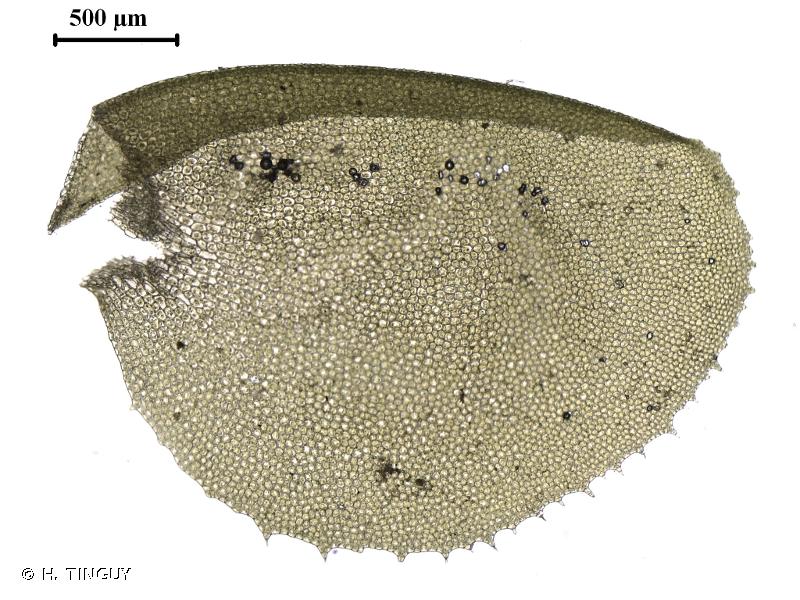
image from: https://inpn.mnhn.fr/espece/cd_nom/6474?lg=en
Introduction
Welcome, fellow enthusiasts, to an exploration of the captivating world of Plagiochila neesiana Lindenb., a remarkable moss species belonging to the Plagiochilaceae family. Often referred to simply as Plagiochila, this unassuming yet fascinating plant has captured the hearts and minds of bryologists and nature lovers alike. Let’s delve into the intricate details that make this moss truly extraordinary.
Background
Before we dive into the specifics of Plagiochila neesiana Lindenb., it’s essential to understand its place within the broader context of the plant kingdom. This moss belongs to the phylum Marchantiophyta, also known as the liverworts, and the class Jungermanniopsida, which encompasses the leafy liverworts. These plants are often overlooked, but they play a crucial role in various ecosystems, serving as indicators of environmental health and contributing to the intricate web of life.
Main Content
Morphology and Identification
Plagiochila neesiana Lindenb. is a striking moss species that exhibits a distinctive appearance. Its fronds are deeply lobed, resembling tiny, delicate leaves arranged in a spiral pattern along the stem. These fronds are typically green to yellowish-green

image from: https://www.flickr.com/photos/vilseskogen/25345875475/
in color, with a glossy or shiny surface that catches the eye. The stems are creeping and branched, forming intricate patterns as they spread across their substrate.
One of the most remarkable features of Plagiochila neesiana Lindenb. is its ability to reproduce both sexually and asexually. During the sexual reproductive cycle, it produces

image from: https://inpn.mnhn.fr/espece/cd_nom/6474/tab/fiche
sporophytes that release spores, allowing for the dispersal and propagation of the species. Additionally, this moss can also reproduce asexually through the formation of gemmae, which are small, specialized reproductive structures that can develop into new plants.
Global Distribution and Habitat
Plagiochila neesiana Lindenb. is widely distributed across various regions of the world, including North America, South America, Europe, Asia, and Oceania. It thrives in a diverse range of habitats, from temperate to tropical regions, and can be found growing on various substrates, such as rocks, tree bark

image from: https://inpn.mnhn.fr/espece/cd_nom/6474/tab/fiche
, soil, and decaying logs.
This moss species is particularly well-adapted to moist and shaded environments, often found in forests, ravines, and stream banks. Its ability to thrive in these conditions is due to its unique morphological and physiological adaptations, which allow it to efficiently absorb and retain moisture.
Ecological Roles and Adaptations
Plagiochila neesiana Lindenb. plays a vital role in its respective ecosystems, contributing to the overall biodiversity and functioning of these environments. As a

image from: https://www.researchgate.net/figure/Plagiochila-simplex-Sw-Lindenb-A-habit-B-shoot-in-dorsal-view-with-intercalary_fig14_360631517
pioneer species, it is often one of the first plants to colonize disturbed or newly exposed areas, helping to stabilize the soil and pave the way for other plant species to establish themselves.
Furthermore, this moss serves as a
-Lindenb.-95440.sm.jpg)
image from: https://www.biodiversidadvirtual.org/herbarium/BFI-Plagiochila-porelloides-(Torr.-ex-Nees)-Lindenb.-cat15564.html
microhabitat for various invertebrates, providing shelter, food, and breeding grounds for a diverse array of organisms, including insects, arachnids, and microorganisms
-Lindenb.-273913.jpg)
image from: https://www.biodiversidadvirtual.org/herbarium/Plagiochila-porelloides-(Torr.-ex-Nees)-Lindenb.-img273913.html
. Its ability to retain moisture also contributes to the overall humidity levels within its immediate surroundings, creating a favorable environment for other moisture-loving species.
Case Studies/Examples
One notable example of the ecological significance of Plagiochila neesiana Lindenb. can be found in the Pacific Northwest region of North America. In this area, the moss plays a crucial role in the recovery of old-growth forests after disturbances such as logging or wildfires. Its ability to rapidly colonize and stabilize the soil allows for the subsequent establishment of other plant species, ultimately contributing to the restoration of these valuable ecosystems.
Technical Table

image from: https://www.researchgate.net/figure/Plagiochila-semidecurrens-Lehm-Lindenb-Lindenb-1-A-portion-of-the-vegetative_fig2_343281294
| Characteristic | Description |
|---|---|
| Phylum | Marchantiophyta |
| Class | Jungermanniopsida |
| Family | Plagiochilaceae |
| Genus | Plagiochila |
| Species | Plagiochila neesiana Lindenb. |
| Common Name | Plagiochila |
| Frond Color | Green to yellowish-green |
| Frond Surface | Glossy or shiny |
| Stem | Creeping and branched |
| Reproduction | Sexual (sporophytes, spores) and asexual (gemmae) |
| Habitat | Moist, shaded environments (forests, ravines, stream banks) |
| Substrate | Rocks, tree bark, soil, decaying logs |
| Distribution | North America, South America, Europe, Asia, Oceania |
| Ecological Role | Pioneer species, microhabitat, soil stabilization |
Conclusion

image from: https://www.pinterest.co.uk/pin/plagiochila-porelloides–308637380693938828/
Plagiochila neesiana Lindenb.

image from: https://www.researchgate.net/figure/Plagiochila-bifaria-Sw-Lindenb-A-habit-B-dry-shoots-in-lateral-view-C-shoots_fig3_360631517
, a remarkable moss species, has proven itself to be a true marvel of nature. From its intricate morphology and diverse reproductive strategies to its global distribution and ecological significance, this unassuming plant has captured the hearts and minds of enthusiasts worldwide.
As we continue to explore and appreciate the wonders of the natural world, let us not forget the vital roles played by these often-overlooked organisms. Perhaps the next time you encounter a patch of Plagiochila neesiana Lindenb., you’ll pause and reflect on the incredible journey this moss has undertaken, adapting and thriving in a constantly changing environment.
In the end, we are left with a thought-provoking question: What other secrets and marvels lie hidden within the intricate tapestry of life, waiting to be discovered and appreciated?